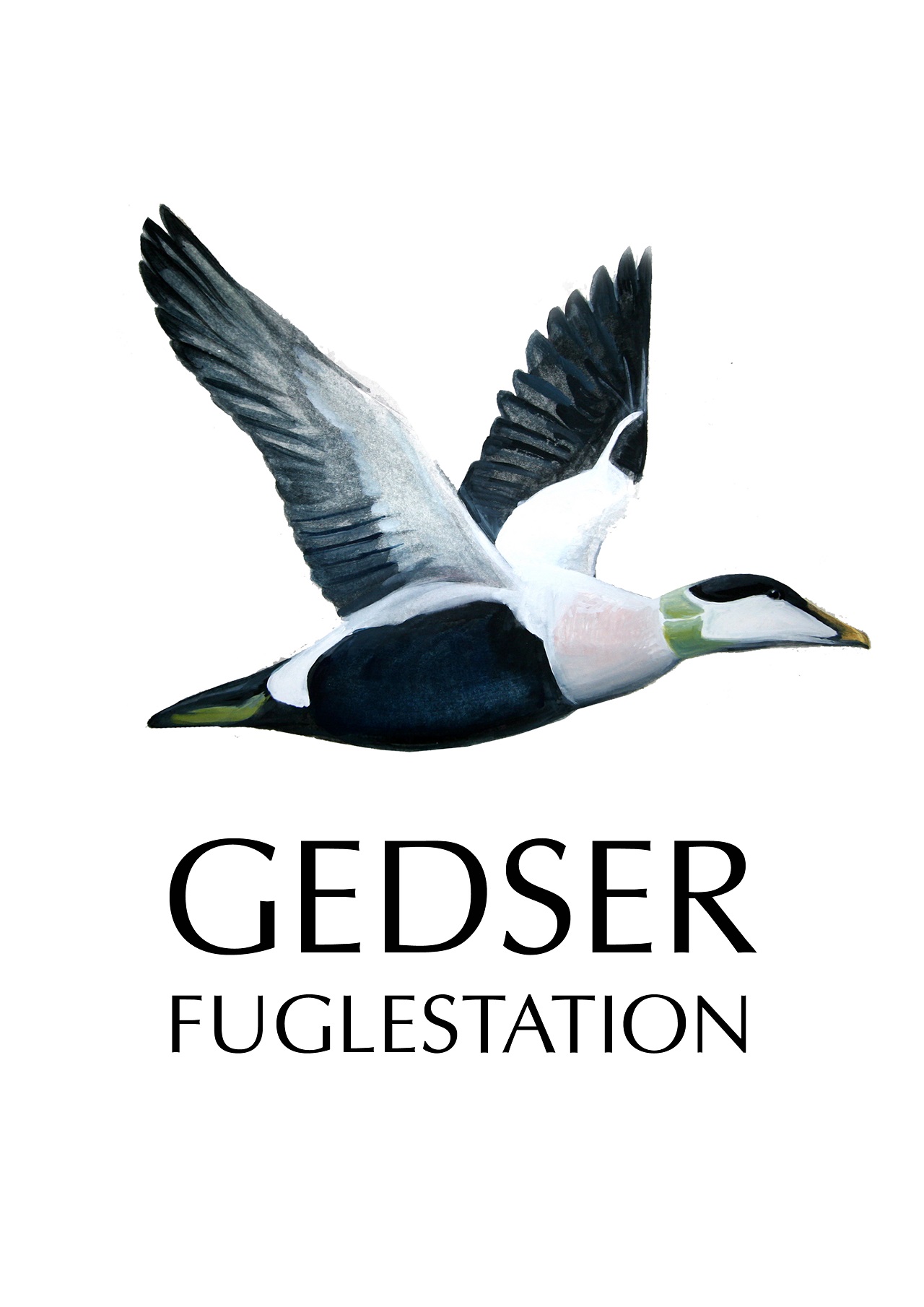Gedser Fuglestation Blog
Her på Gedser Fuglestations blog bringes korte nyheder i dagbogsformat om hændelser på fuglestationen.
A bad season for our long-distance migrants
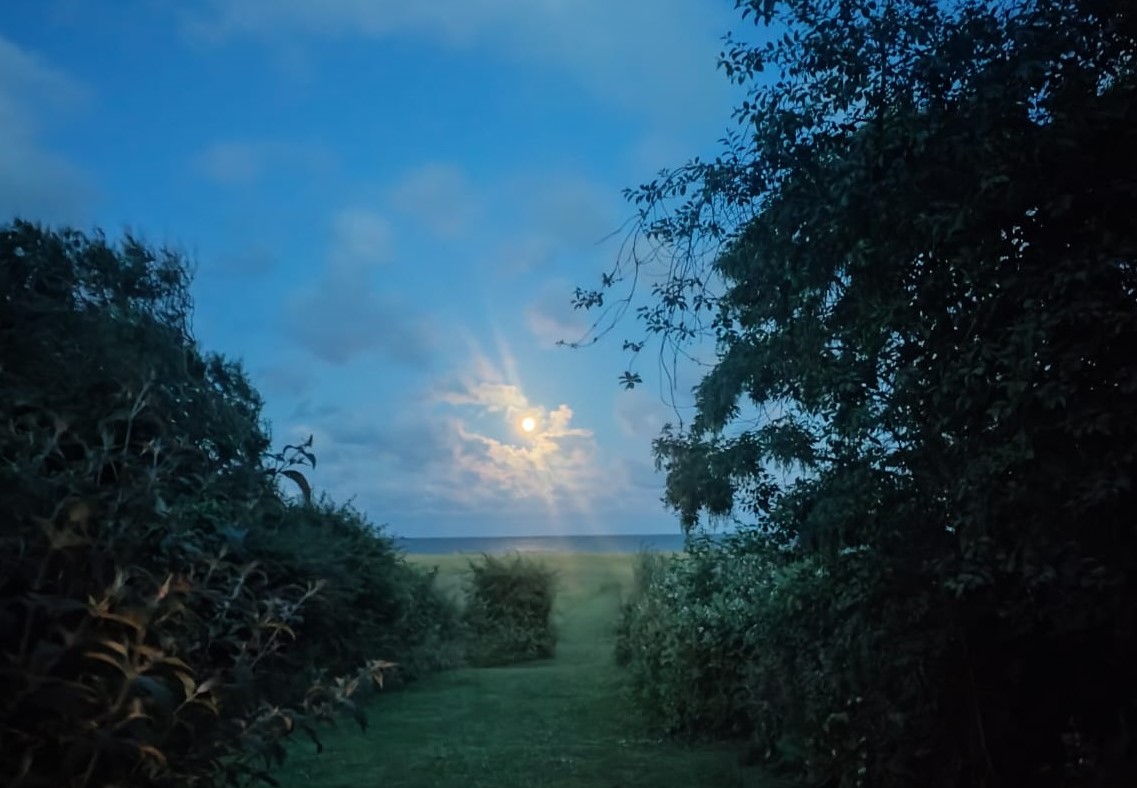
The moon over the sea when we opened the door this morning. Nearly a bit kitchy, this picture...
The ringing:
Early in the morning, Signe arrived at the station to join Henrik and me in the ringing. She extracted her first birds, which went very well, but unfortunately, there were not many to practice much, just four new ones and one recap. The only bird that Henrik got in one of his rounds was a little surprise, a 1K Song Thrush “Sangdrossel”.
As there is not much to write about this morning, I will continue my little analyses of this season. A week ago, when I presented you the season totals of this year compared to last year and five years ago, I promised to look a bit more into a few species. Now I found some time for that, I looked at three Long-distance migrants, the Icterine Warbler “Gulbug”, the Lesser Whitethroat “Gærdesanger” and the Willow Warbler “Løvsanger”. When I looked at the abundance of new-ringed birds of different common species in mid-May, I wrote, that we are not even so bad with the long-distance migrants. Looking at the totals now, this interim balance can not be confirmed. All three long-distance migrant species have the lowest abundances this year compared to the previous year and 2019.
Especially abundances of the Icterine Warbler "Gulbug" were really low. We would not have expected that, as this is the bird that we hear in the garden every morning, but especially newly ringed Icterine Warblers “Gulbug” were alarmingly low, just 35 Icterine Warblers “Gulbug” were ringed this year.
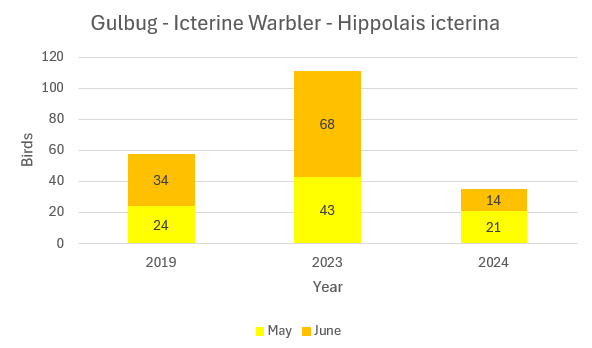
These diagrams just include newly ringed birds, we also got some recaptures of Gulbug “Icterine Warblers” from the previous years, but it indicates low abundances of that species. We did not get any young 1K birds in the nets, still just adults with brood patches, so let´s hope the breeding season goes well.
Also the abundance of new-ringed Willow Warblers “Løvsanger” is very low, not even half of the season total of last year have been ringed this year: Last year 230 birds got a ring in Gedser during the spring season, this year it was 93.
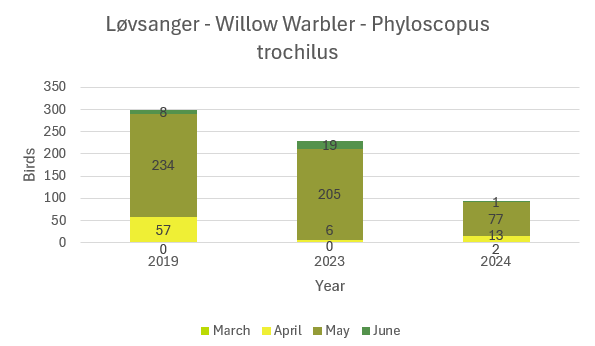
The Lesser Whitethroat “Gærdesanger” is doing best of the three species, although we also have a low season total this year, it was not as much lower than last year's season total as in the other species. 100 were ringed this season, while it was 128 in 2023 and 184 in 2019.
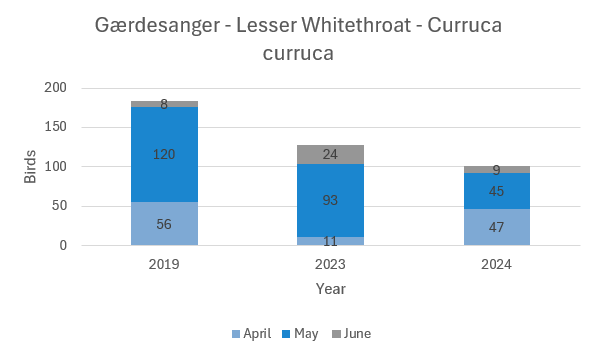
I already prepared season totals for short-distance migrants and I you can look at the diagrams one of the next days, so stay tuned, it is worth reading our daily blog!
The moths:
After yesterday, the trap was very well-prepared last night, the light was even checked when it got dark. All good this night, but the weather did not reward me for that. Again, it was a quite windy night which made just very few moths fly also Hans did not have much and nothing special. So I will put a picture of a very common moth, that you can also see active during the day on grass for example, it is Crambus lathoniellus.

Crambus lathoniellus

Today, a Collared Pratincole “Rødvinget Braksvale” had been reported at Bøtø. Mads, Gert and I went to Bøtø looking for it, but without success this time. Maybe tomorrow.
People: Mads Elley, Gert Jeppesen, Signe Gartig, Henrik Jørgensen, Hanelie Sidhu
